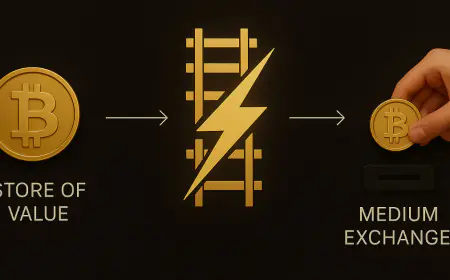Vitalik Buterin Regrets Ethereum Not Switching to PoS Earlier
Vitalik Buterin regrets not switching Ethereum to Proof of Stake (PoS) earlier.

Vitalik Buterin, Ethereum’s co-founder and lead architect, shared his regret at ETHBerlin for not adopting a simpler version of Proof of Stake (PoS) earlier. He also noted that Ethereum remains misunderstood despite its mainstream success, unlike Bitcoin, which has a straightforward narrative as digital gold.
Also Read: How Many Ethereum Are There?
At this year’s ETHBerlin event, 620 developers showed up after three days of nonstop coding. Few expected Vitalik Buterin to take the stage. The Ethereum creator was a surprise guest, and his reflections on Ethereum’s design were even more unexpected.
Ethereum Is Bigger Than Ever
The U.S. has just approved a spot Ethereum exchange-traded fund, and BlackRock, the world’s largest asset manager, has launched its own tokenized fund on Ethereum’s blockchain. The Ethereum network has grown into an extensive ecosystem of developers and financial applications worth over $63 billion, becoming bigger than ever.
However, Buterin has a list of things he would have done differently. These include the development of Ethereum’s Virtual Machine (EVM), smart contracts, and the PoS consensus mechanism. “Bitcoin has a simple narrative, which is digital gold,” Buterin said. “But with Ethereum, it’s like, ‘Whoa, what the heck is Ethereum?’”
Sitting on stage with ETHBerlin organizers Afri Schoedon and Franziska Heintel, Buterin reminisced about his fondest memories in Berlin. These included hacking in an old office with Ethereum co-founders Gavin Wood and Jeffrey Wilcke, launching Devcon Zero, and celebrating the Merge upgrade in 2022.
Also Read: Ethereum Name Service (ENS) Becomes Top Weekly Gainer
Then, Schoedon asked an interesting question: “With everything you know and everything you’ve learned over the last 10 years, how would you build Ethereum differently today if you could start from scratch?”
Buterin’s first concern was Ethereum’s Virtual Machine. The original EVM design used 256-bit processing instead of 64- or 32-bit. In computer architecture, bit size is crucial, with larger bits offering better efficiencies. However, 256 bits is inefficient for most operations and creates unnecessary bloat on a blockchain. “The original design was way too overfitted for 256-bit,” Buterin explained.
Ethereum Should Have Simplified Smart Contracts
Buterin also mentioned that early Ethereum developers should have focused on simplifying smart contracts. Fewer lines of code would have added transparency, making it easier to see and verify what was happening inside them. Ethereum switched from a Proof of Work (PoW) consensus mechanism, used by Bitcoin, to PoS in 2022. Buterin believes this switch should have happened much earlier.
When we switched to Proof of Stake, we should have been willing to switch to a somewhat crappier version of Proof of Stake earlier on. We ended up wasting a lot of cycles on really trying to make Proof of Stake perfect.
Vitalik Buterin
Ethereum’s switch to PoS replaced miners with validators who stake 32 Ethereum, worth about $124,000, to secure the network and earn rewards. Misbehaving validators, such as those validating fraudulent transactions, face penalties. The switch replaced energy-intensive computing with economic incentives. “We could have saved a huge amount of trees if we had a much simpler proof-of-stake in 2018,” Buterin said.
Another regret was the lack of automatic logging from the beginning. Automatic logging helps users track big-money token transfers and backdoor honey pots, making it easier to follow the money. Logging becomes even more important as the industry moves from externally owned accounts to smart wallets. “It should have been in there from the beginning,” Buterin said. “It could have been like 30 minutes of coding from myself, Gav, and Jeff. Instead, it’s an EIP.”
Cryptopolitan reporting by Jai Hamid
What's Your Reaction?




































































































